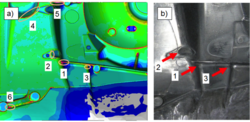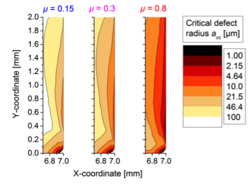Innovative tool technology has always been a basic prerequisite for new production and materials technologies. Tools are subjected to extreme mechanical, thermal and tribological loads. For this reason, tool materials – mostly high speed tool steels, hard metals and ceramics – can be considered as the cream of the crop with respect to strength and temperature resistance.
A major challenge in the simulation of tool loading and lifetime are the multi-physics (thermal-mechanical-tribological) nature of the process, where the tribological and heat transfer conditions at the interface between tool and workpiece are most difficult to assess. For obtaining the tool loading, it is therefore indispensable to model the complete machining process. High local pressure loads on the tool lead to local plastic deformation, tensile residual stresses and an overall reduction of tool lifetime. Due to the high stress gradient near the surface, the lifetime typically depends on fatigue crack propagation rather than crack initiation. For this reason, fracture mechanics plays an important role in residual lifetime assessment of tools.




















